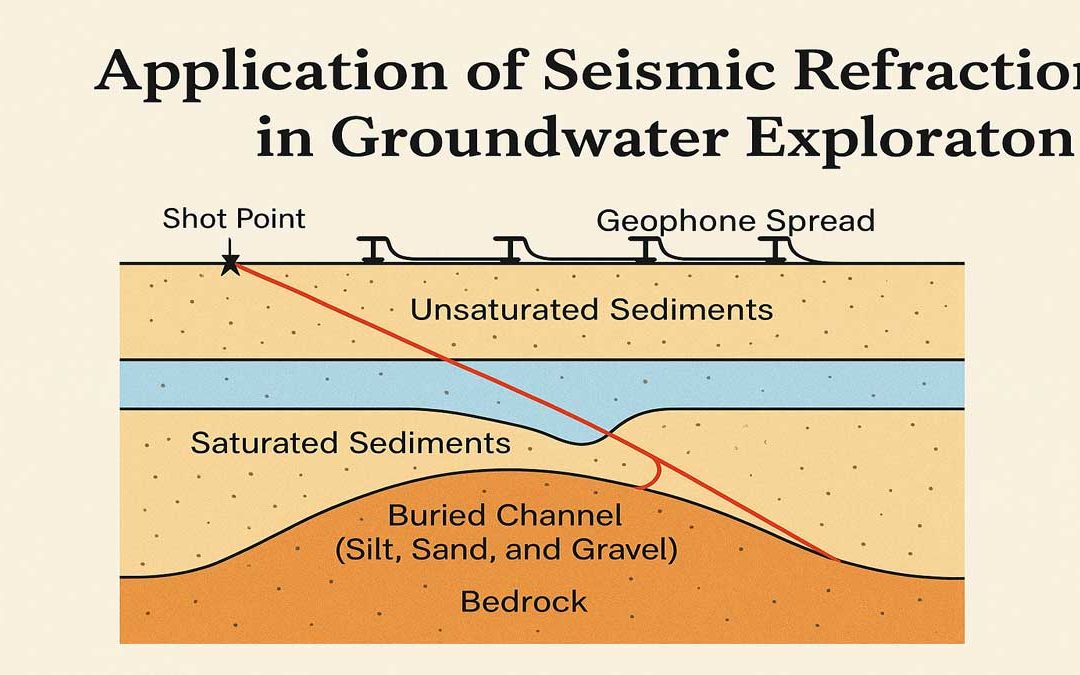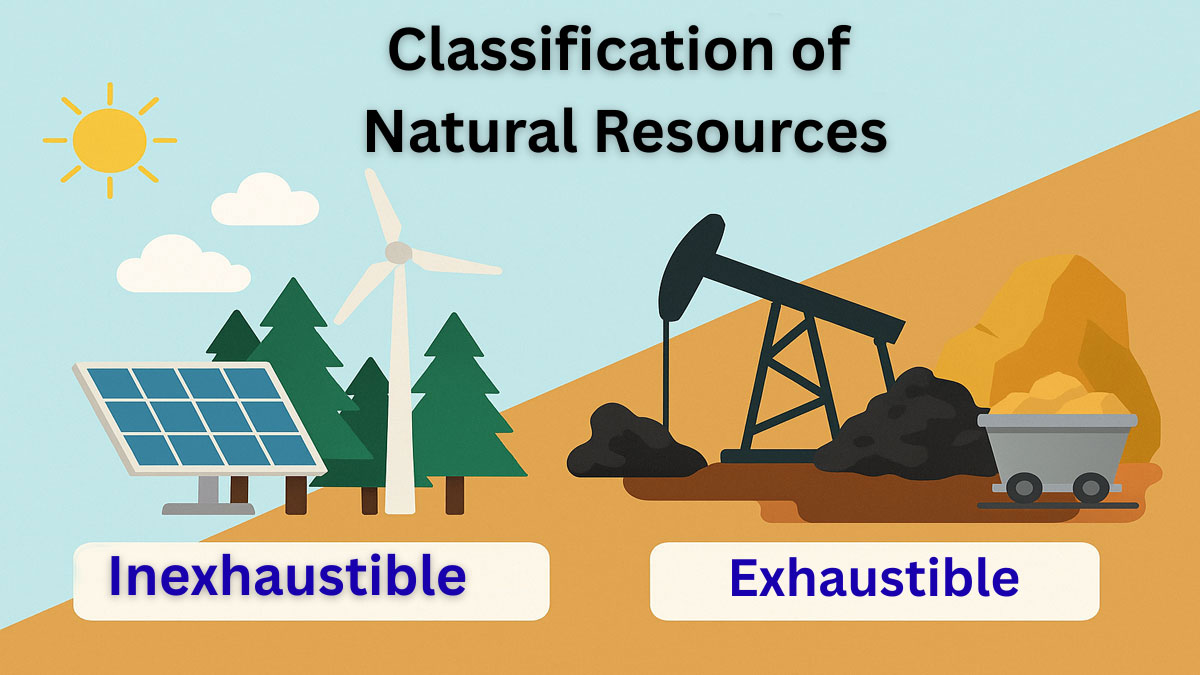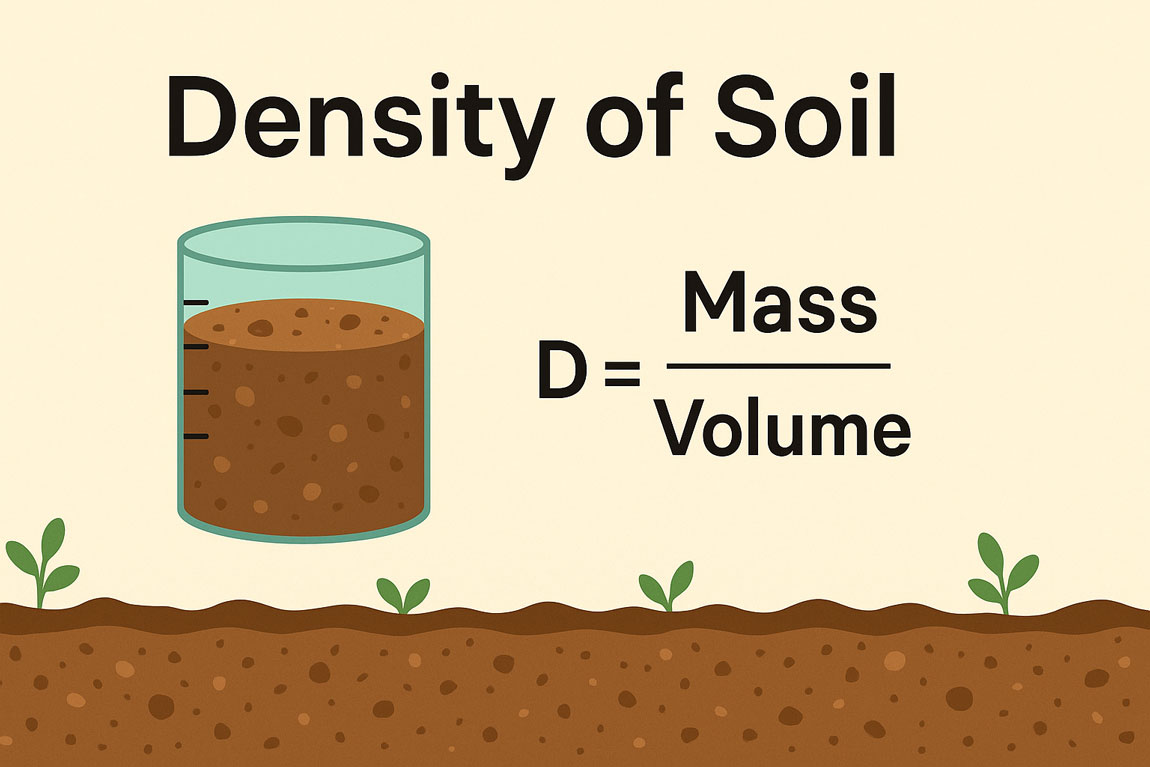Application of Seismic Refraction Measurements in Groundwater:
Mapping of Buried Channels using Seismic Refraction:
- The most common use of the seismic method in hydrogeology is the determination of the thickness of sediments overlying non-water-bearing consolidated bedrock.
- The channel of the bedrock may be plane or irregular, but it is of interest where it occurs in the form of a channel filled with silt, sand, and gravel.
- The mapping of buried channels can be done successfully when there is an appreciable velocity contrast between the sediments and the bedrock.
Measuring Depth to Water Level with Seismic Refraction:
- Seismic refraction measurements of semi- or unconsolidated sediments and clastic deposits reveal that compressional wave velocities increase abruptly at the water table.
- The velocity in saturated continental sediments is generally about 1.50 km/sec and is sufficiently higher than that in the unsaturated sediments (less than 1.0 km/sec to 1.4 km/sec), so that the zone of saturation acts as a refractor.
- Whether or not the water table can be recognized seismically depends on the thickness of the saturated zone above the bedrock.
- The thicker the unsaturated zone, the easier it is to determine the water table.
Determining Gross Stratigraphy of an Aquifer via Seismic Refraction:
- If some of the velocity discontinuities in unconsolidated or semi-consolidated deposits represent Stratigraphic breaks in the sedimentary section, seismic refraction measurements can be used, under optimum conditions, to unravel the gross stratigraphy of a deposit.
- If these breaks further represent significant hydrologic boundaries, such as those between water-producing formations and non-water-producing formations, the seismic work may have special hydrogeological interest.
Mapping Lateral Facies Variations in an Aquifer:
- Seismic refraction measurements in areas where a large number of geophone spreads and shot points are employed may reveal systematic lateral variations in the velocity of unconsolidated deposits.
- These variations reflect measurable variations in the physical properties of the deposits, which in turn result from fundamental lithological variations.
- The geological factors that contribute to the variations in compressional wave velocity are geologic age, average grain size, grain size distribution, composition, degree and nature of cementation, confining pressure, degree of saturation, and porosity.
Estimating Porosity from Seismic Refraction Data:
- There is a significant correlation between porosity and compressional wave velocity in clastic sediments – velocity increasing with decreasing porosity.
- Similarly, there is a correlation between velocity and density – velocity increasing with increasing density.
- These correlations of porosity and density with seismic wave velocity are interdependent as the bulk density can be defined by three parameters: porosity, grain density and pore-fluid density.
- For a group of sediments with the same average mineralogical composition and saturated with groundwater of approximately uniform composition, variations in bulk density are a function primarily of variations in porosity.
- If a small amount of cementing material is present in the pores, it would diminish total porosity but at the same time increase bulk density.






